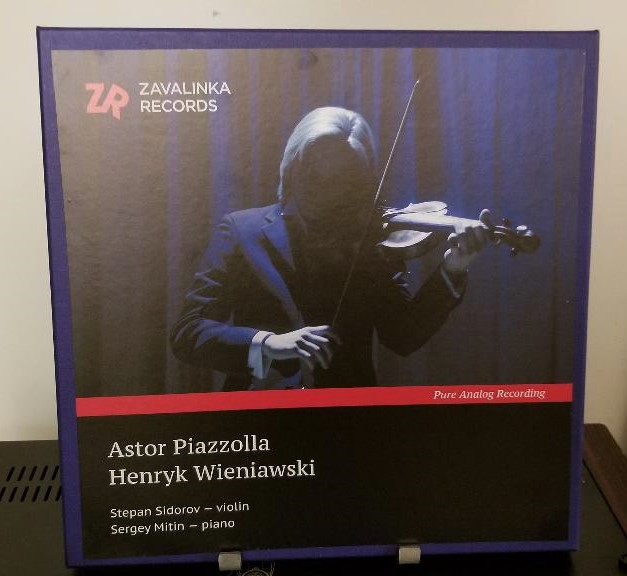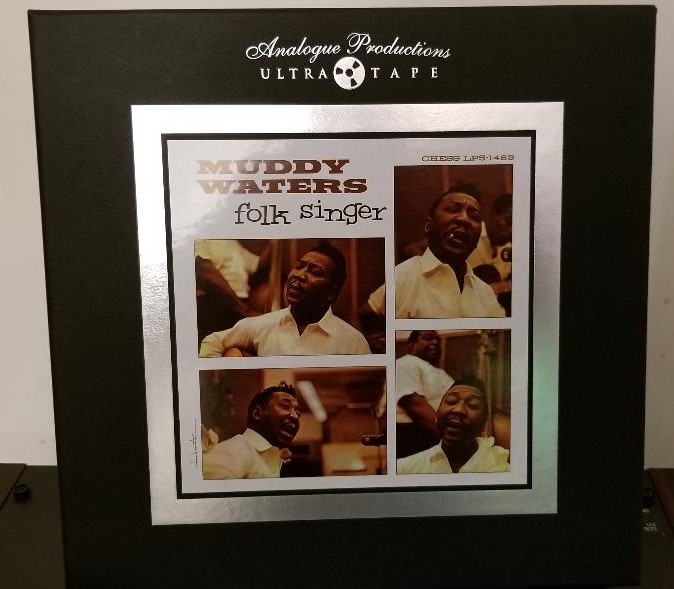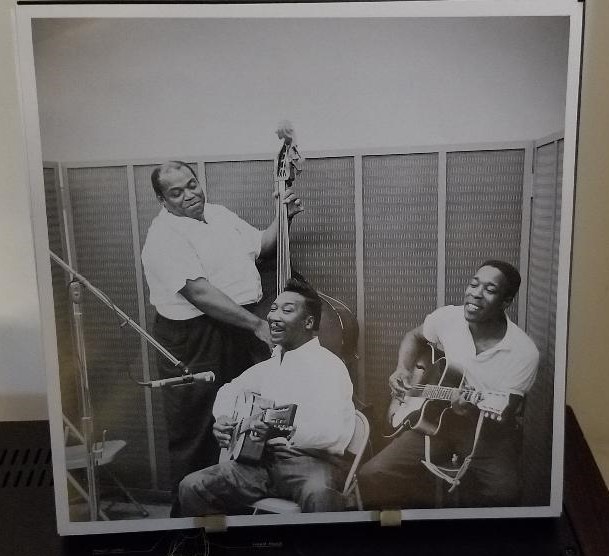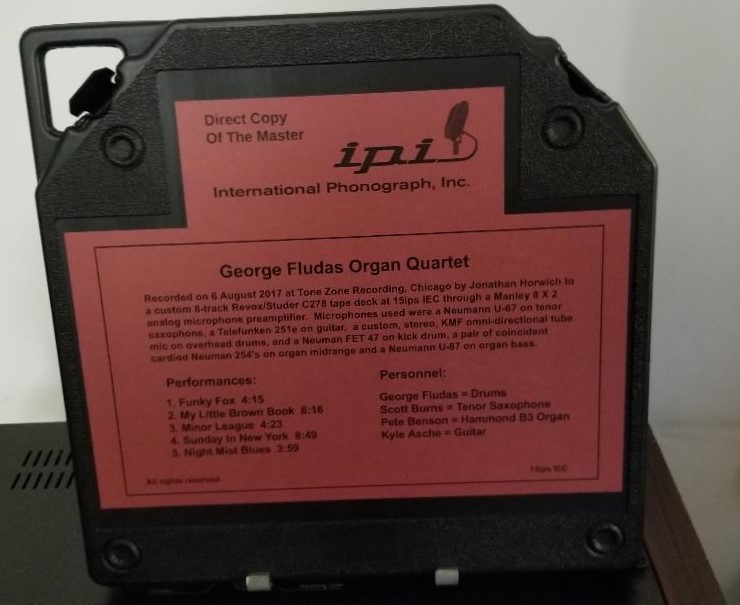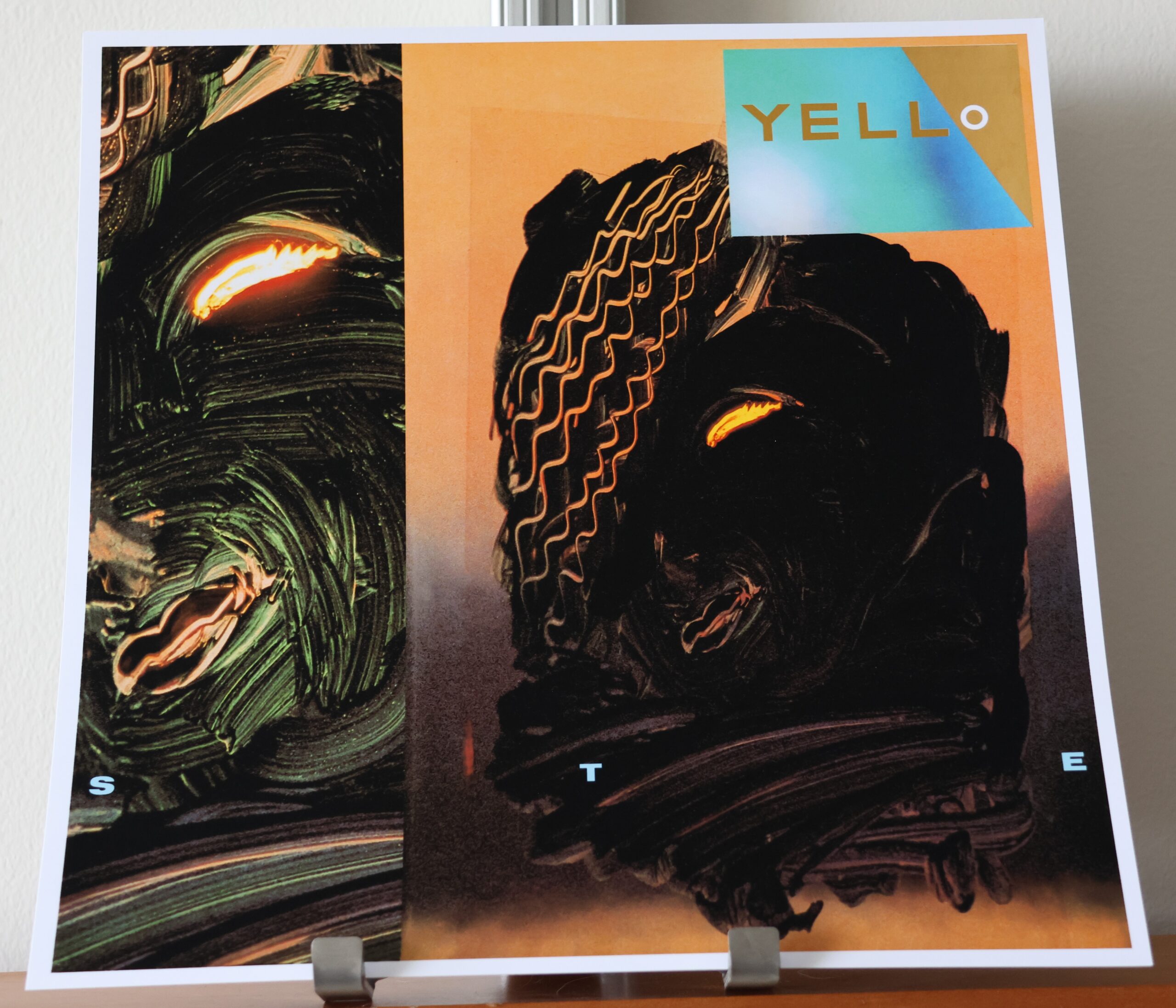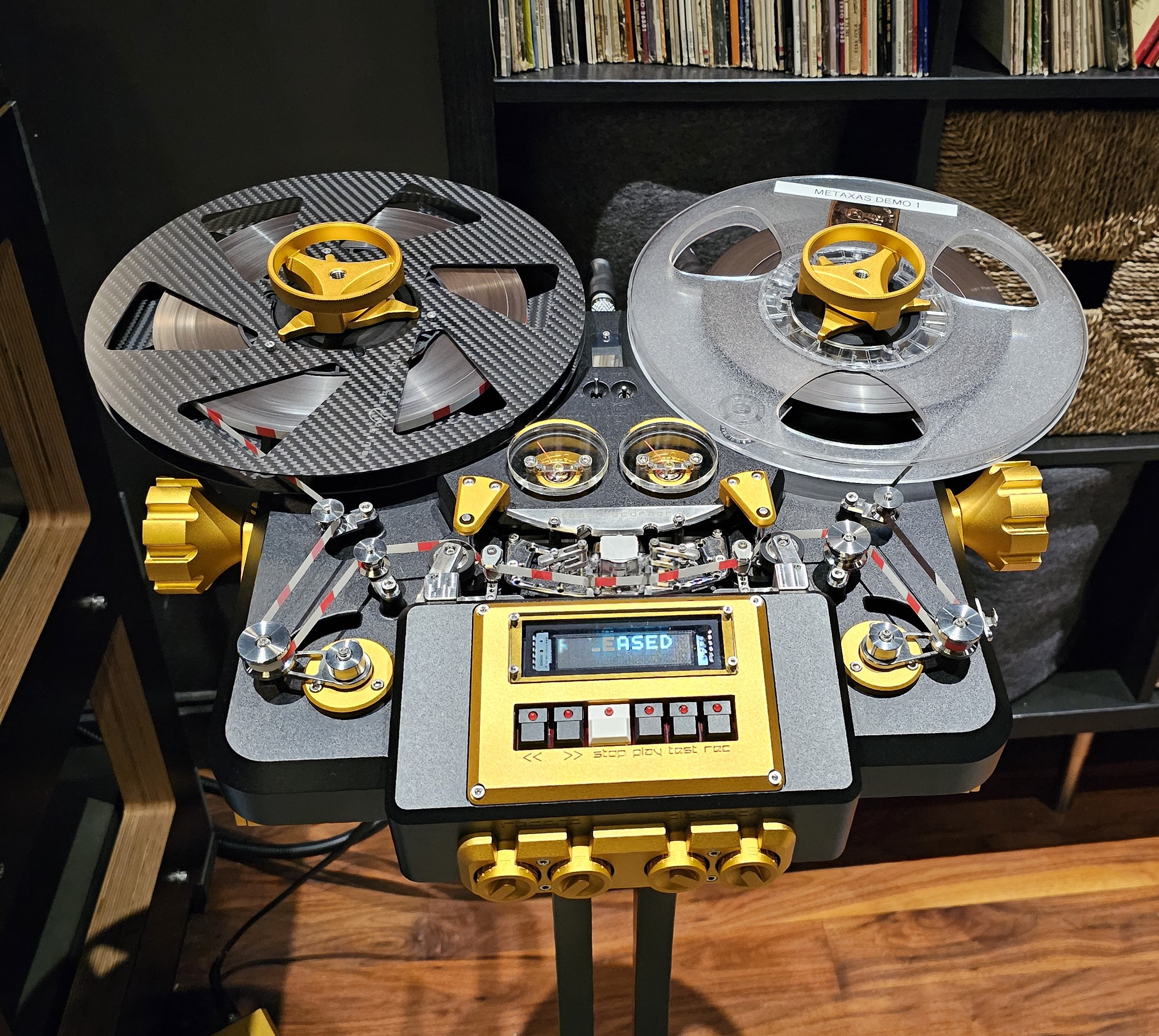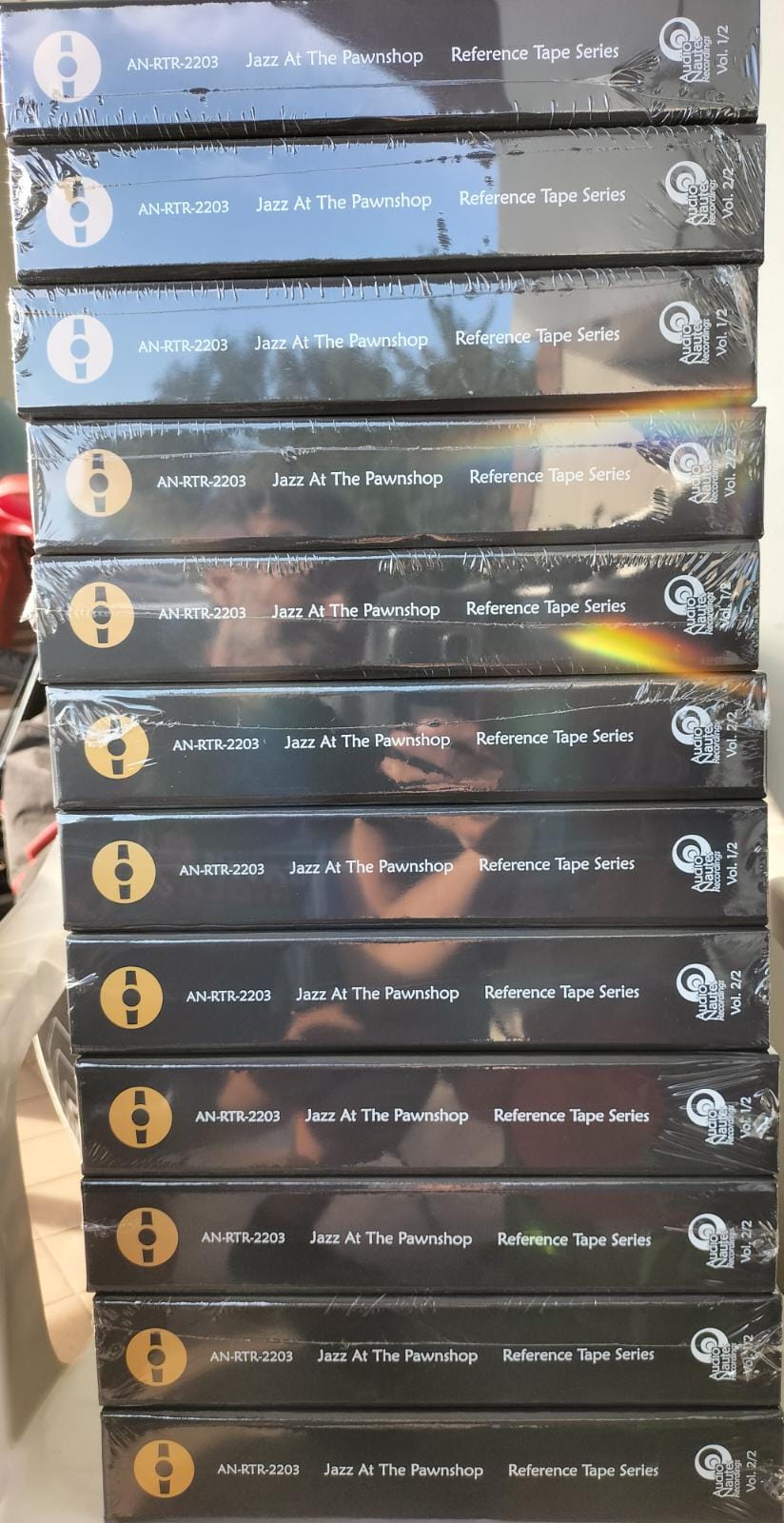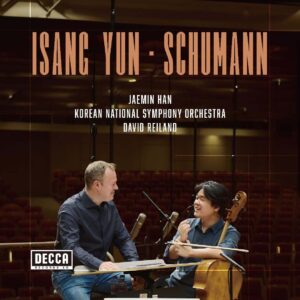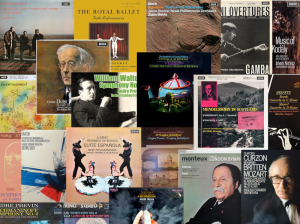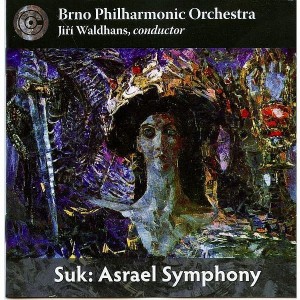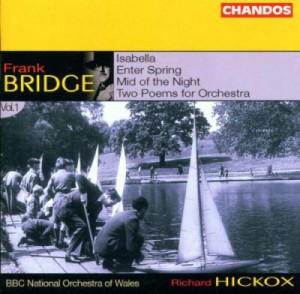How times have changed! Just a decade ago tape enthusiasts literally grabbed any title they could get their hands on just to have something, anything, to play on their machines. Many of those tapes, in retrospect, were pretty darn bad. Jump ahead a decade and there is such a glut of tapes on the market that audiophiles are for the first time becoming very choosy about which tapes they purchase. Of both the new and reissued variety as seen in this article.
But first a quick update on some changes to my tape playback front-end (HERE) before getting to this trio of excellent new tape releases from newcomer Zavalinka Records as well as stalwarts International Phonograph, Inc. and Acoustic Sounds. Recently one of the RFT ECC81 tubes in the Doshi AudioV3.0 tapestage IEC EQ section (heard as a channel imbalance) took a powder forcing me to make a decision. Should I continue using the stock tubes or take advantage of one of the beauties of the Doshi tapestage (and phonostage) and roll some other 12AT7/ECC81 type tubes? Fortuitously there happened to be on hand a pair of recently purchased but never used Mullard CV4024s from Upscale Audio with which to experiment. And what better time than now to try them? The experiment turned out so successful, in fact, that after talking to designer Nick Doshi the pair of RFT ECC81s occupying the phase splitter position were also replaced with a second pair of a pair of Mullard CV4024s. The most surprising thing about these Mullard CV4024 tubes? They don't have that "prototypical" Mullard tube sound. None of that fat bottom end or overly lush and somewhat thick sound oh-so typical of Mullards. No. In its place was the best of the classic tube sound. Transparent. Detailed. Dynamic. Extremely linear sounding. Sensational retrieval harmonic overtones. Best of all, the tubes won't break the bank!
Now for this outstanding trio of 15-ips tape releases beginning with a release from Zavalinka Records.
Henryk Wieniawski: Astor Piazzolla; Stepan Sidorov (violin) and Sergey Mitin (piano), Nikolai Kazantsev (Producer and recording engineer), 15 ips, 2-track, IEC EQ, live recording 2/24/18, Moscow, Russia, Zavalinka Records, US distributer: Oswaldo Martinez, Let There Be Sound, [email protected], Price: $350/one reel (RTM SM900 tape).
Zavalinka Records based out of Moscow, Russia is the brainchild of Nikolai Kazantsev and his daughter Maria. This duo recently made a big splash at the Munich 2018 High-End Show with the debut of their first recording of works by Wieniawski and Astor Piazzolla. Now curiosity got the better of me and I had to know the genesis of the word zavalinka. Zavalinka, as it turns out, is a mound of earth that insulated the outer walls of Russian peasants' homes from the cold. The meaning eventually morphed into a synonym for a cozy corner or gossip bench where people could sit, chat and share news traditionally ending in the evening with singing.
Who is the man behind the company and the recording? Nikolai Kazantsev shared a few tidbit starting with, "Both of my parents are musicians, so it runs in the family. I started to be interested in music at the age of 11 and played the piano." He added, "I studied electrical engineering at the university but always loved music and several years ago finally found a way to combine my passion for music and electronics." The concert on this tape, Nikolai shared, "was recorded on a Studer A807 reel-to-reel tape machine using just a pair microphones. One microphone was a Neumann and the other of a custom design that fed a custom designed preamplifier. Cabling was the Tchernov Reference Mk. 2. The musicians are two young gentlemen from Moscow Conservatory."
The tape starts rolling with Polish violinist and composer Henryk Wieniawski's most famous composition Legende arranged for violin and piano. Wieniawski was of the most brilliant violinists of the Romantic era and the H.W. Violin competition began in 1935 and has been held every five years since 1952. Winners of the first competition included Ginette Neveu (who sadly perished at 30 years old in the 1949 Air France Azores plane crash) in first place, David Oistrakh in second and Henri Temianka in third. This three-part composition emotions changing with changes from minor of the first movement to (mostly) major of the second movement back to the minor in the last movement.
Legende is followed by four pieces by Astor Piazzolla including Libertango, Café 1930, Adios Nonino and Gran Tango (Unfinished). Astor Piazzolla is a renowned Argentinian nuevo tango composer that fused elements of both jazz and classical music into his compositions. Steve Huey writes on AllMusic.com, "It's not hyperbole to say that Astor Piazzolla is the single most important figure in the history of tango…Piazzolla's place in Argentina's greatest cultural export is roughly equivalent to that of Duke Ellington in jazz—the genius composer who took an earthy, sensual, even disreputable folk music and elevated it into a sophisticated form of high art."
Libertango (1974) written after Astor Piazzolla's heart attack while in Italy and is a linguistic blend of liberty and tango and a break from classic tangos. Café 1930 is one of four movements from Histoire du Tango and a period when people stopping dancing and instead listened to tango. This piece is noted for its slower tempo, harmonies and melancholy feeling. Adios Nonino (1959) was written by Astor Piazzola to honor his father's death and is noted for melancholy nature based on earlier Nonino (1954). It's also one of Astor Piazzolla's most popular pieces and used in both the 1998 and 2010 Olympic ice skating competitions. Grand Tango (1982) originally written for piano and cello celebrates nuevo tango with its rhythms and syncopation, energy and humor.
The sound on this tape is extraordinary and replete with everything that you would expect from a live recording. The sound of people walking onstage, pages rustling, people talking, pedals creaking and more. One will have to search far and wide to find a better recorded violin. Really, really wide. Yes, the violin is a touch spot lit but the recording ever so beautifully captures the detail and tone of the instrument without with high strings ever sounding strident. The touch of the bow on the strings. The harmonic envelope surrounding the violin. The sense of the instrument and musician being in the room. For some reason the violin is a touch better sounding—eg. a smidge more focused and detailed—on the last two cuts of the recordings. The piano too has a real liveliness and sense of air surrounding the instrument. The dynamics are so real and unstressed that one never even thinks about them.
My main quibble with the recording is its tendency to be left (violin) and right channel (piano). That aside, this music is simply engaging. One word of warning. Since it was a live recording, the last piece cuts out partway through the concert. One last minor quibble. It would be nice if Zavalinka Records could provide some more information about the performers and the music. I did friend pianist Stepan Sidorov on Facebook to find out more about the recording but never received a response.
Zavalinka Records continues to add to their tape catalog bringing four new recordings to RMAF 2018. Samples from these tapes are available on Oswaldo's website (HERE).
A great first effort for the new music label out of Russia!
Muddy Waters: Folk Singer, Muddy Waters (guitar and vocals), Buddy Guy (guitar), Willie Dixon (bass), Clifton James (drums), Acoustic Sounds/Chess Records RRAP 0016, 15-ips, 2-track, IEC EQ, Price: $450.
My first reaction when Chad Kassem told me at a recent audio show that Muddy Water's Folk Singer would highlight Acoustic Sound's second series of 15-ips tape releases was complete shock. Not for long, though, as exhilaration rapidly starting coursing through my body. What audiophile in their right mind with a tape machine wouldn't want a 15-ips tape copy of this classic Chess Records recording? One that has an extra, unlisted tenth track of Waters's "You Can't Lose What You Ain't Never Had" (taken from an April 1964 recording session) that's not on the original album. For good reason, too, as this new 15-ips tape copy lives up to and exceeds even the most lofty expectations. The tape just brings this 1963 recording to life in new and unexpected ways whether it be foot taps, the sound of Guy's guitar and reverb trails.
Folk Singer is an all-time audiophile favorite that has been reissued by the likes of MFSL, Classic Records and recently Analogue Productions at 45 rpm. There was even a not so great digitally sourced LP reissue that if memory serves me right was released in the 90s. (Sadly, I've only seen the original release once in my life.) Wayne Goins recently wrote an excellent piece on the history of this recording that Positive-Feedback readers should take a moment to read (HERE).
This now forty-five year old recording finds Waters, "the father of modern Chicago blues," returning to his early roots with a stripped down, all acoustic album. Bringing out the traditional call and response "conversation" among the musicians. Much has been written about how this album (and its title) came about because of the burgeoning folk movement. It's also important to remember that white audiences in the early 60s were also discovering blues artists like Waters, Lightnin' Hopkins and many others who had faded out of sight. That's not to mention the effect that blues was having on both the rock and jazz scene. There's the famous story (HERE) of Mick Jagger meeting Keith Richards at Dartford Station that fateful day now 57 years ago. "Keith was impressed with the imported LPs that Mick was carrying. They got down to talking about music among other things. The two rekindled their friendship when they discovered their mutual passion for Chuck Berry, Muddy Waters and bluesy rock and roll. That friendship blossomed into the birth in 1962, of the longest running rock and roll act in history, the Rolling Stones." Today a plaque erected in at the train station in 2011 commemorates the pairs meeting at Dartford Station.
This album is comprised more of down tempo ballads save for Sonny Boy Williamson's classic song "Good Morning Little Schoolgirls" with its 1920s brothel blues type message. Sonically, this tape is a total knockout with the B-reel for some reason having slightly better upper octaves, presence and dynamics than the A-reel. It's for instance on Water's "Big Leg Women" the difference between Guy's guitar being in the room and Guy's guitar BEING in the room! The tape also simply has a far greater purity and completeness than even the 45 rpm LP. The 45 rpm Analogue Production's reissue by comparison—as good as it sounds—is a bit flatter dimensionally and musically. The LP lacks just a little of the life and real quality of the tape. Nor does the tape ever get a little edgy during dynamic passages. My favorite track from the original nine songs is "Country Boy" simply for its ultra stripped down just Waters and Guy playing slide guitar. Most of all, Guy's guitar playing simply gives me goosebumps.
Folk Singer is a tape that belongs in all tapeheads collection! You haven't truly heard Folk Singer until you've heard the 15-ips tape version!
George Fludas: Organ Quartet, Direct Copy, International Phonograph, Inc, George Fludas (drums), Scott Burns (tenor sax), Pete Benson (Hammond B3) and Kyle Asche (guitar), 15-ips, 2-track reel-to-reel tape, IEC EQ, Recorded August 2017, Direct Copy, Price: $250.
Jonathan Horwich of International Phonograph, Inc. has one of the biggest catalogs of any reel-to-reel tape company. IPI's catalog includes both new and reissued recordings, classical and jazz. All of Jonathan's Master Tape Copies are of the single reel, 32-minute variety. But don't be fooled. His single reels contain as much music as many double reel releases. Plus this tape is a Direct Copy meaning this copy is sourced from the 8- to 2-track stereo mixdown as opposed to his Production copies that are made from the two-track mixdown tape and one generation later. Yes, fewer direct copies made but they are more than worth the extra $100. ($250 vs. $150 for the Production copy.) The Direct Copies are just a little better for the same reason we invest that extra money into our high-end audio systems. A little more transparency. A little more focus. A little more harmonic overtones. Make sure to subscribe to Jonathan's mailing list to stay on top of all of his recordings and when the direct copies become available.
Jonathan has his finger on the pulse of the Chicago jazz scene and records many of the city's top artists. One day Jonathan and George Fludas, a well-known and famous drummer in the Chicago scene, got to chatting and lo and behold it turned out both were interested in doing a jazz organ recording. While Jonathan had never attempted to record a Hammond B3 but he didn't let that stop him. Jonathan in fact, "hadn't been thrilled with the organ sound he had heard in past" and really wanted to do justice to the B3. That led Jonathan to experimenting with a stereo pair of Neumanns he previously used in his classical recordings to capture that feeling of space. One of the biggest challenges Jonathan faced in making this recording, however, "was preventing bleeding of the drums into the other microphones. Jonathan's attention to detail didn't stop there. He started with one mike on sax and felt after listening felt that the sax sounded too thin. Next he tried his trusty Neumann U67 on the sax and the results speak for themselves.
This recording was done at Tone Zone Recording in Chicago using a custom designed and portable 8-track Revox/Studer C278 running at 15-ips and IEC EQ through Manley 8 x 2 analog mike preamplifier. A Neumann U67 was used on the tenor sax, a Telefunken 251e on the electric guitar, a custom stereo KMF omni tube mike for overhead drums, a Neumann FET 47 on kick drums), a pair of coincident cardio Neumann 254s for the organ's midrange and finally a Neumann U87 for the organ's bass. Phew!
Fludas' quartet covers a range of music ranging from pieces by Bill Strayhorn to Duke Pearson to Ahmad Jamal to Peter Nero. The group starts to gel on the first track and quickly hits its stride with vamps on the following tunes. Each of the tracks feature a mixture of up and down tempo songs with many highlight solos by each of the quartet. The opening sax solo by Burns on cut 2, that old tyme drum solo on track 3 by Fludas and some hot guitar licks by Asche on the last cut. Not to mention the sound of the Benson's organ and its low notes on cut 2.
There is no mistaking that this is a tube recording. The sound fills the room with its crystal clear character. Instrumental tones are mesmerizing, nary a harsh moment and abounding with inner detail and subtleties.
George Fludas's Organ Quartet is one of my all time favorite IPI tapes and highly recommended for both newbies and those familiar Jonathan's recordings alike!




